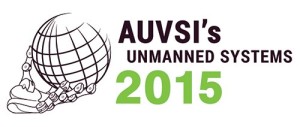NEWS
AmCham News tags
- Accounting / Financial
- AmCham Norway
- Company Profiles
- Education / Research
- Entertainment
- Food & Beverage
- Government
- Healthcare
- Hotel/ Restaurants/ Conferences
- Insurance
- International Leadership Interview Series
- Membership Guide
- Publications
- Rising Leaders
- Technology
- Trade
- Travel
Archive tags
Business News tags
- Accounting / Financial
- Airline / Travel
- Automobile / Transport
- Chemicals / Metals
- Communications/PR/Media
- Culture / Lifestyle
- Defense / Security
- Education / Research
- Energy
- Entertainment & Lifestyle
- Financial / Investment
- Food & Beverage
- Government
- Health
- Human Resources
- Insurance
- IP & Innovation
- Legal
- Management Consulting
- Manufacturing
- Pharmaceutical
- Politics
- Property / Real Estate
- Seafood
- Shipping & Offshore
- Statistics
- Tax
- Technology
- Trade
UAVs: Accessing the Future
Category: AmCham News
Robotics is expected to be a major driver for global job creation in the coming years. The use of robots will lead to new jobs across many industries, including consumer electronics, food, solar and wind power, automotive and advanced battery manufacturing, and medicine.
Many US commercial markets are waiting on regulation to determine aerial use, however, several industries are being granted flight exemptions by the US Federal Aviation Administration (FAA). Approved uses include oil and gas flare stack inspection, agriculture, and construction site monitoring. Companies that have expressed a desire to use unmanned systems include Amazon, Google, DHL and Alibaba, who want to use unmanned aircraft to deliver packages, as well as filmmakers and realtor, who want to use them for aerial imaging. Additionally, aerial drones have been used to survey damage from the flooded Red River in North Dakota, to keep firefighters safe by monitoring California and Australian wildfires, and to search for people stranded by floodwaters in New Orleans in the aftermath of Hurricane Katrina and in Haiti following a devastating earthquake.
In ground robotics, automated driving technologies are emerging and several automakers have announced plans to introduce self-driving cars as early as 2020. Nontraditional automakers such as Google are also pursuing the technology. For emergency response, air, ground and maritime unmanned systems have increasingly been used in emergency response and disaster assistance work. After the 9/11 attacks on the World Trade Center, small, tank-like, treaded robots were used to search for victims and assess the structural integrity of the buildings in spaces too small and dangerous for people or dogs to enter.
Environmental applications are a rapidly growing sector for unmanned systems as well. NASA has sent drones into hurricanes over the Atlantic Ocean to study underlying hurricane formation and to monitor the intensity of changes in storms. Drones have been used to study Arctic ice, and ice flows, and are being used in the Brazilian Amazon basin for environmental surveys as well as monitoring for signs of illegal logging and mining. Agriculture has been identified as a significant market for unmanned systems.
In an economic report issued in 2013, AUVSI estimated that the financial impact of such systems will total more than $82 billion by 2025, creating more than 103,000 new jobs in the US. Some countries already make extensive use of such systems. The military uses a broad variety of air, ground and maritime unmanned systems for intelligence, surveillance and reconnaissance, communications, resupply, and attack missions. Unmanned and robotic systems have been used by law enforcement for bomb disposal, hostage and barricade situations, event or incident monitoring, natural disaster response, search and rescue, and fighting wildfires. In addition, 30 ground robots were used as a security tool during the 2014 FIFA World Cup in Brazil.
Join the Nordic delegation organized by the US Commercial Service (USCS) to the world’s largest unmanned autonomous systems show and conference – AUVSI 2015, May 4 – 7 – in Atlanta, Georgia.
If you are interested in participating, please contact Marianne Ruud (Marianne.Ruud@trade.gov) at the US Embassy in Oslo. For more information visit the AUVSI 2015 website.


